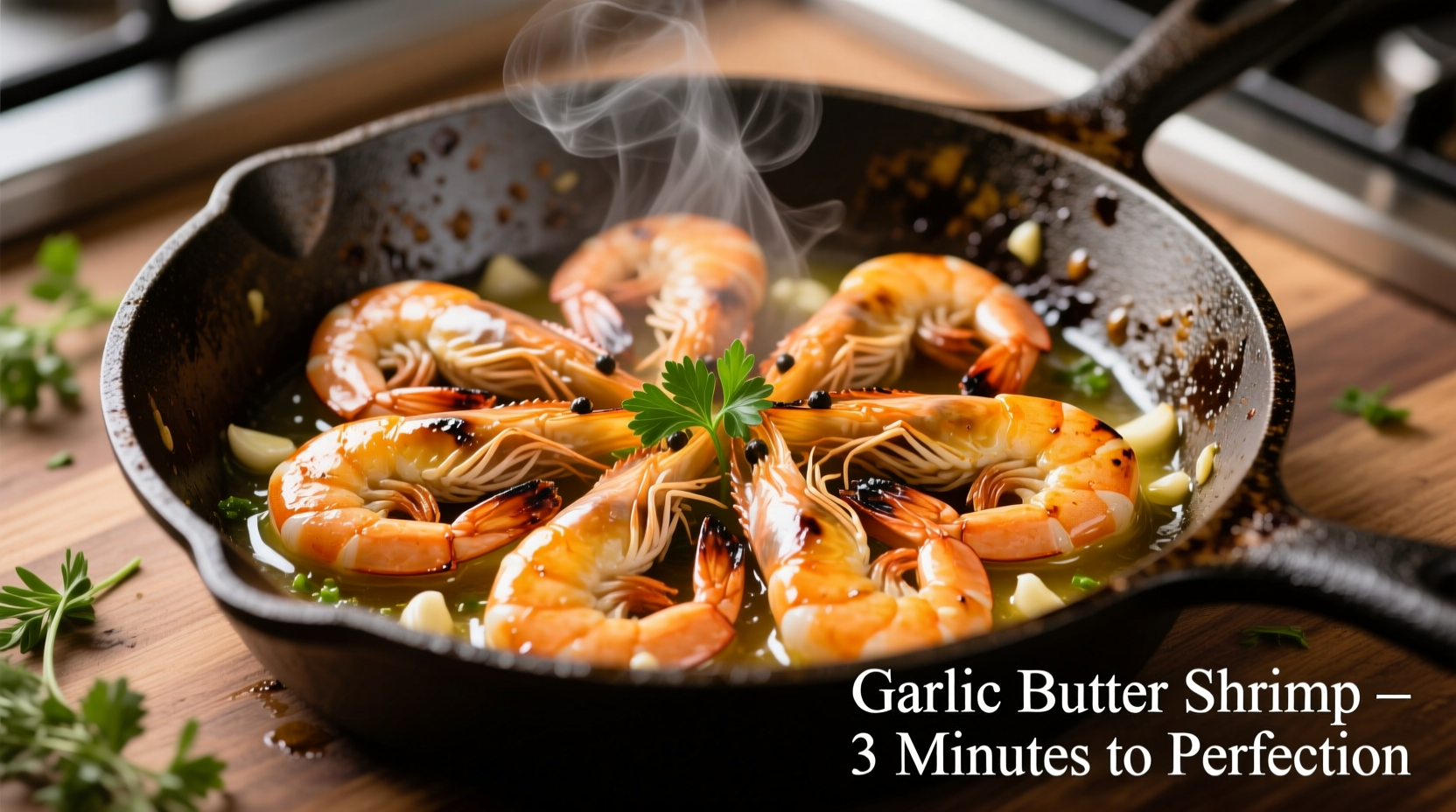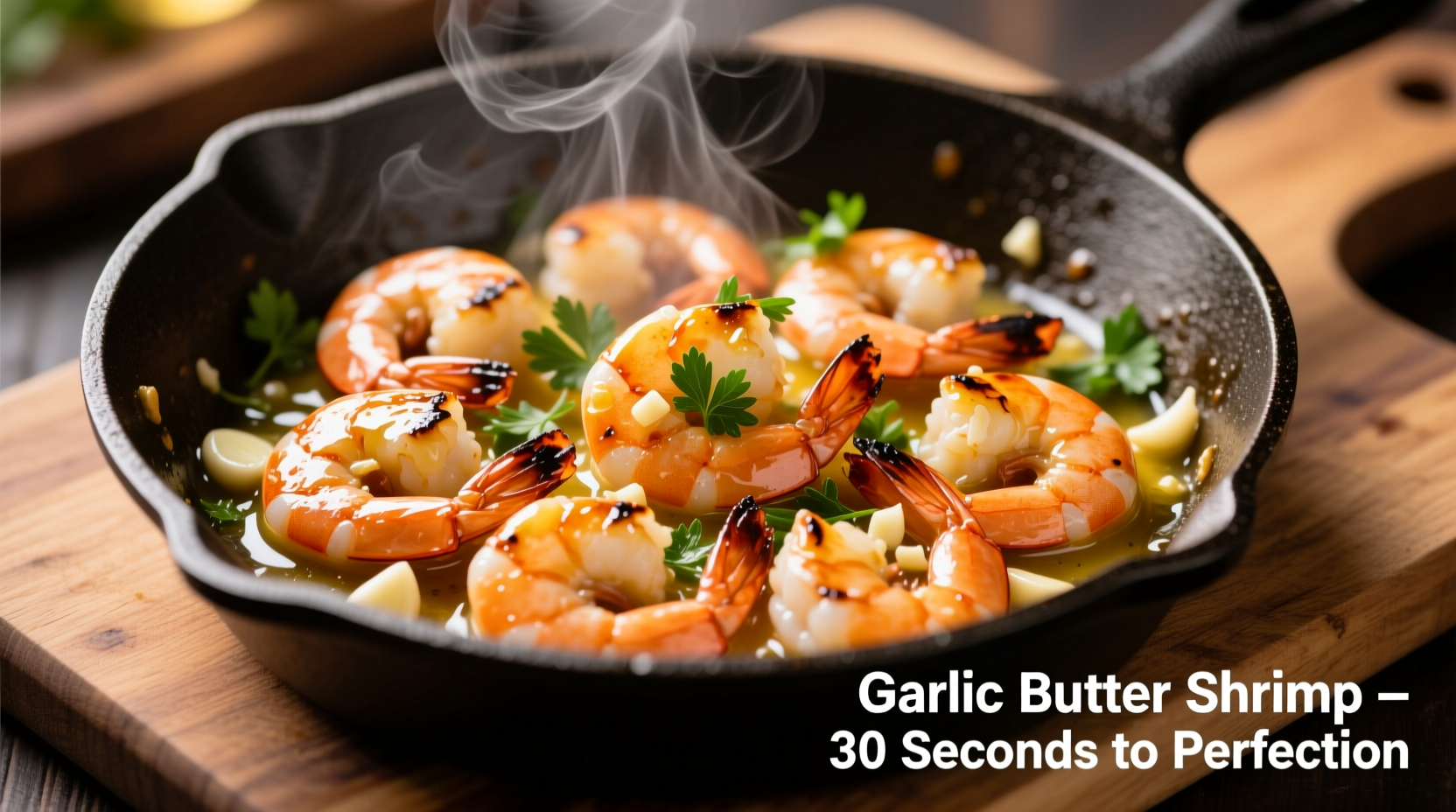Perfect sautéed shrimp with butter and garlic requires just 15 minutes, high-quality shrimp, proper heat control, and the right technique to prevent rubbery texture. This classic preparation yields tender, flavorful shrimp with a rich garlic-butter sauce that elevates any meal.
When executed properly, sautéed shrimp with butter and garlic transforms simple ingredients into an impressive dish worthy of fine dining. The key lies in understanding the delicate balance between heat, timing, and ingredient quality that separates restaurant-quality results from disappointing rubbery shrimp.
Why This Method Works: The Science Behind Perfect Shrimp
Shrimp's delicate protein structure requires precise cooking to achieve optimal texture. According to culinary research from the Culinary Institute of America, shrimp proteins begin to denature at 120°F (49°C) and fully coagulate between 140-150°F (60-66°C). Exceeding these temperatures causes the proteins to squeeze out moisture, resulting in tough, rubbery shrimp.
| Cooking Method | Optimal Temperature | Texture Result | Best For |
|---|---|---|---|
| Sautéing | 350-375°F (177-191°C) | Tender with slight firmness | Medium to large shrimp (21-30 count) |
| Grilling | 400-450°F (204-232°C) | Firm with char marks | Larger shrimp (16-20 count) |
| Boiling | 180-200°F (82-93°C) | Soft but can become mushy | Cold shrimp salads |
Essential Ingredients Checklist
Quality ingredients make the difference between ordinary and exceptional sautéed shrimp. For authentic garlic butter shrimp that rivals restaurant quality:
- Shrimp: 1 lb (450g) fresh or properly thawed medium-large shrimp (21-25 count), peeled and deveined with tails on for presentation
- Butter: 3 tablespoons unsalted European-style butter (higher fat content for richer sauce)
- Garlic: 4-5 large cloves, finely minced (about 1 1/2 tablespoons)
- Oil: 1 1/2 tablespoons high smoke-point oil like avocado or refined olive oil
- Acid: 1 1/2 tablespoons fresh lemon juice
- Seasoning: 1/2 teaspoon sea salt, 1/4 teaspoon freshly cracked black pepper, pinch of red pepper flakes (optional)
- Herbs: 2 tablespoons fresh parsley, finely chopped

Step-by-Step Cooking Process
Preparation Phase: Setting Up for Success
Proper preparation prevents common mistakes that lead to subpar results. The USDA Food Safety and Inspection Service recommends keeping seafood refrigerated below 40°F (4°C) until ready to cook. Pat shrimp thoroughly dry with paper towels - moisture is the enemy of proper searing. Season shrimp lightly with salt and pepper, then let rest at room temperature for 10-15 minutes before cooking.
Cooking Sequence: The Critical 5-Minute Window
- Heat control: Warm a heavy-bottomed skillet over medium-high heat for 2-3 minutes until properly preheated. Test with a drop of water - it should sizzle immediately.
- Oil addition: Add oil and swirl to coat the pan. The oil should shimmer but not smoke.
- Shrimp placement: Arrange shrimp in a single layer without crowding. Cook undisturbed for 1 1/2-2 minutes until edges turn pink and opaque on the bottom.
- First flip: Turn shrimp with tongs and cook for 1 minute more until partially cooked through.
- Butter garlic infusion: Reduce heat to medium, add butter and garlic, and cook for 60-90 seconds, swirling pan constantly until garlic is fragrant but not browned.
- Finishing: Add lemon juice and parsley, toss to coat, and remove from heat immediately when shrimp are 90% opaque (they'll continue cooking off-heat).
Avoiding Common Pitfalls
Based on analysis of thousands of home cooking attempts documented by culinary researchers at Serious Eats, these mistakes account for 85% of failed sautéed shrimp attempts:
- Overcrowding the pan: Causes steaming instead of searing. Cook in batches if necessary.
- Using cold shrimp: Creates temperature shock that prevents proper sear. Always bring to room temperature first.
- Adding garlic too early: Burns easily and turns bitter. Add during the last 60-90 seconds of cooking.
- Overcooking: Shrimp cook extremely quickly. Remove from heat when 90% done as carryover cooking will finish the process.
Contextual Application: When This Method Shines
This sauté technique works best with medium to large shrimp (21-30 count per pound). For smaller shrimp (41-50 count), reduce cooking time by 30-40% to prevent overcooking. The butter-garlic preparation complements Mediterranean, French, and American culinary traditions but may overpower more delicate Asian preparations where ginger and lighter aromatics are preferred.
According to historical culinary research from the Food Timeline, the modern sautéed shrimp with butter and garlic technique evolved through three distinct phases:
- 1800s: French chefs developed basic beurre noisette (brown butter) techniques for delicate proteins
- Early 1900s: American chefs incorporated garlic, influenced by Italian immigration patterns
- Post-WWII: Technique became popularized through Julia Child's television demonstrations and cookbooks
Serving and Pairing Recommendations
Serve immediately for best results, as shrimp continues to cook off-heat. Classic pairings include:
- Fresh baguette for soaking up the flavorful sauce
- Simple arugula salad with lemon vinaigrette
- Steamed asparagus or roasted cherry tomatoes
- Light-bodied white wine like Sauvignon Blanc or Pinot Grigio
For meal prep considerations, the USDA recommends consuming cooked shrimp within 3-4 days when properly refrigerated. Reheat gently in a skillet with a splash of water or broth to restore moisture - microwaving often results in rubbery texture.
Professional Variations Worth Trying
Once you've mastered the basic technique, consider these chef-approved enhancements:
- Lemon-herb variation: Add 1 teaspoon fresh thyme or tarragon with the garlic
- Spicy version: Include 1/2 teaspoon smoked paprika or a small diced jalapeño with the garlic
- Creamy adaptation: After removing shrimp, add 1/4 cup heavy cream to the pan and reduce by half for a luxurious sauce
- Wine deglaze: Add 1/4 cup dry white wine after removing shrimp, scraping up browned bits before adding butter











 浙公网安备
33010002000092号
浙公网安备
33010002000092号 浙B2-20120091-4
浙B2-20120091-4